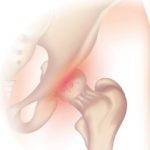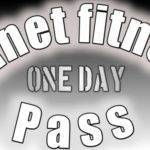
Table of Contents
Exercise plays a key role in the treatment or management of shoulder arthritis of various types and in whatever stage of the disease. It has been a major component in both the pre and post-surgical treatment of shoulder arthritis with a focus on slowing down the progression of the disease or managing the symptoms.
Shoulder arthritis is a major debilitating disease seen mostly in seniors above the age of 50. Individual experiences may differ significantly and at times the treatment outcomes as well. What may work for one may not work just as well for another. This makes it imperative for exercises for shoulder arthritis to be prescribed by a qualified healthcare provider.
Individualizing treatment plans is important and should be based on the type of arthritis affecting the shoulder (if it’s osteo or rheumatoid arthritis for instance), the stage of the arthritis, in addition to the outcome of both physical and other medical examinations conducted before the start of treatment.
Is exercise good for arthritis in the shoulder?
Just as in a lot of orthopedic cases, the treatment approach for shoulder arthritis starts with non-surgical means such as:
- Professional or work modification,
- Physical therapy,
- Diet and lifestyle modification, etc.
This may involve a wide range of different professionals working alone or together to help you manage or mitigate the symptoms. However, from the list above you’ll find out that adjustment in activities and lifestyle are a core part of the treatment. This is where exercise comes in but how really good and beneficial is it?
A study published in the Journal of Aging1 has proven the efficacy of exercise in improving the functional abilities of arthritic patients including those with neck arthritis as covered in another of my article. In another study conducted on patients aged between 40 to 70, exercise was found to improve symptoms of fatigue, pain, and depression.2
However, from my experience with so many patients over the years not every exercise type is beneficial. The right ones have to be recommended after a detailed understanding of your unique situation and the stage of the disease as stated earlier.
What exercises can I do for arthritis in my
shoulders.
Before embarking on any exercise there are points you need to note and things you must begin with.
- Don’t choose your exercise programs by yourself, let an expert do that for you,
- You need to start slowly and build up from there as you improve,
- Be gentle with yourself, don’t go hard,
- Stop if it gets painful and see your healthcare provider if the pain remains and possibly results in swelling,
- Begin your exercises with a warm-up.
A warm-up exercise could be a brisk activity like a 5 to 10-minute walk or aerobic to prepare your muscles, cardiovascular, and cardiopulmonary systems for the exercises. Below are a couple of exercises that help with the symptoms of shoulder arthritis.
1. Shoulder pendulum exercise.
This workout helps to stretch and relax your shoulder muscles as well as relieve pain. The relaxation helps them function more efficiently.
Start by standing beside or next to a table, the backrest of a chair, or anything that could offer you reliable support.
- Place your feet at not less than hip-width apart.
- Brace your tummy and bend over slightly while holding onto something for support with your good arm.
- Let the affected arm hang vertically down from the shoulder,
- See that your knees are not locked. They should preferably be slightly bent at a 15% angle,
- Using your legs and hips, make the arm swing loosely from left to right about 5 to 10 times,
- You may keep your feet where they are at the start or place one foot forward for balance and then swing the arm back and forth 5 to 10 times.
- Afterward, make the arm swing around in a circle 5 to 10 times.
This is one repetition. You may straighten up briefly and repeat the exercise for up to 5 repetitions for a start if it’s your first time but build on that as you get used to it. You may also want to increase the radius of your circular swing. This will require you to bend over more each time but the extent you bend should be within your comfort zone.
Some people may tell you not to do this if you have back pain but that’s not quite true. It depends on the cause of your pain as there are so many possible causes of back pain. If it’s due to a slipped disc this exercise may not be for you, however, there are back pains that can be relieved from the stretch of bending over.
2. Resisted row exercise.
It’s a strengthening and postural correction exercise and helps with your shoulder arthritis pain relief. You’ll need a theraband or elastic band for this. They usually come in different levels of toughness so you may begin with the least depending on your fitness level and severity of symptoms.
- Start by looping the elastic band around a firm and supportive object at about the level of your navel while holding the two ends with each of your hands.
- Stand with your feet at not less than hip-width apart and with your arms by your sides but bent at the elbow.
- Adjust your position to ensure the theraband is not slack.
- Pull on the band such that your elbows move backward and your shoulder blades go into retraction as their medial border moves closer together.
- Hold in that position for about 5 to 10 seconds depending on the force of the pull and how comfortable it is.
- Relaxation back to the pre-pull position after the count makes it a rep. you may do this for about 5 to 10 reps, depending on how your arthritis pain responds to it.
3. Internal rotator strengthening exercise.
This is another strengthening exercise aimed at the internal rotators of the shoulder for which you’ll need a theraband too.
- Start by tying the band on firm support at the same horizontal level as your navel.
- Stand with the band on the same side of the arthritic shoulder and keep the upper arm beside your trunk throughout the exercise.
- You may tuck a rolled-up towel between the upper arm and your trunk for stability.
- While holding one end of the band, bend your elbow to 90% and adjust your position so the elastic or theraband isn’t slack.
- Pull the band by swinging your lower arm in a horizontal arc toward your tummy and keep going till it touches the tummy.
- Hold in that position for 3 to 5 seconds.
- In a reverse movement, take the arm back to the starting position, this is one rep.
You may start with 5 to 10 reps and increase the number of reps as you get stronger and more confident.
Do keep in touch by signing up for our newsletter:
4. External rotator strengthening exercise.
The workout is similar to the one described above for internal rotator strengthening. One major difference is the starting position whereby the elastic band is on the opposite side of the arthritic shoulder as shown below.
- Stand upright with the affected arm flexed at the elbow and holding onto the elastic band across your tummy.
- Adjust your position to ensure the band isn’t slack.
- You can tuck a rolled-up towel between your upper arm and your trunk for stability and make sure the upper arm remains beside your trunk throughout the exercise.
- Pull the elastic band outwards or away from your body laterally in an arc.
- You may pull up to an angle of 90% and beyond.
- Hold in that position for 3 to 5 seconds.
- In a reverse movement, slowly return the lower arm to the starting position. This represents one rep.
Do this for about 5 to 10 reps.
5. Shoulder blade rotations.
The shoulder blade is kept in its position mostly by muscular attachment with other parts of your body than joints. This exercise helps to strengthen these muscles as well as improve the mobility or range of motion of the shoulder blade.
In the image shown below, we’ll mostly be concerned with the top three drills.
- Start by pulling your shoulder upwards towards your ears(elevation) and hold for about 5 seconds.
- Then pull the shoulder downward(depression) and hold for 5 seconds.
- Now, pull the shoulder towards each other such that their medial borders come closer together(adduction or retraction) as much as possible and hold for another 5 seconds.
- The above 3 represent a rep but you may still do the shoulder abduction, upward rotation, and downward rotation if you care.
The upward rotation may prove painful so it may be better you do that with your hand going up on a wall for some sort of support. Do this exercise for 5 to 10 reps for a start. Each time be mindful of how your shoulder arthritis pain is responding to it.
6. Shoulder elevation stretches.
Just like in all the other workouts, there are so many ways of doing this. The easiest for a starter would’ve been the one done in supine lying with a light stick unlike what we have in the image below.
- You start by lying supine(on your back) with a light stick that’s about 20-30% longer than your shoulder width.
- Hold the stick on your thighs with both hands and look up straight up at the ceiling,
- Keeping both hands equally straight at the elbows, raise the stick from your thigh up above your head toward the floor at which point you would’ve taken it through almost 180%.
- Hold in that position for about 5 to 10 seconds.
- In a reverse move, lower the stick back to rest on your thighs. This represents one repetition and you can do up to 10 reps.
- With the image shown above, start by getting on a four-point kneeling position with your hands and knees supporting your trunk.
- Keeping a straight back, push your hip backward, and bend your knees as you lower your glutes toward your heels.
- Simultaneously stretch out your arms with straight elbows as you lower your chest toward the floor,
- Hold in that position for about 5 to 10 seconds and get back to the starting position in a reverse move. This makes it a rep.
7. Crossover arm stretches.
This is a variant of the bilateral shoulder abduction shown in the image above. You can call this a kind of unilateral shoulder abduction and it stretches the back of the shoulder.
- Start by standing or sitting in an upright position,
- keeping a straight elbow, and pulling the arm with the arthritic shoulder across your chest.
- Support the stretched-out arm at its upper arm with the other hand.
- Hold the stretched-out arm in that position for up to 15 to 20 seconds and release it in a reverse movement to make one rep.
Do up to 5 to 10 reps of this and increase the number of reps over time as you deem fit.
8. Wall push-ups.
This is similar to the push-ups you do on the floor but in a lighter form. Weight-bearing is good as part of the training for an arthritic shoulder but you may want to be careful with the amount of weight you subject your shoulders especially if your arthritis is advanced.
In this drill, the weight you bear through your shoulders is determined by the distance of your feet from the wall. The closer to the wall, the less the weight.
- Start by standing upright close to the wall.
- Place both hands flat against the wall with straight elbows.
- Keeping your entire body straight and without arching your back, adjust your position such that your body gets into an oblique position with regard to the wall.
- Brace your tummy and keep your shoulders at the same level.
- Bend your elbows as you lower your chest gradually toward the wall as much as you are comfortable with.
- On getting to your limit, return to the starting position in a reverse movement. This is one rep.
Repeat this for 5 to 10 repetitions and build up from there as your arms get stronger and the arthritic shoulder becomes less painful over time. You increase the weight by increasing the distance between your feet and the wall.
There are so many of these exercises and their variants that I can’t list them all. However, below is a video of more exercises I feel you may find useful.
What is the best exercise for shoulder arthritis?
The best exercise for shoulder arthritis is that which, with the help of your healthcare provider, is tailored to meet your treatment goals after taking into account certain factors like the stage of your arthritis, the severity of your symptoms, your age, presence of comorbidity, and your level of physical fitness.
Such an exercise should be able to increase your shoulder’s range of motion, reduce the level of pain, reduce the progression of your arthritis, and improve your general functional level and quality of life without exacerbating your symptoms.3
Shoulder arthritis exercises to avoid.
Shoulder arthritis exercises to avoid are typically those that your doctor hasn’t recommended for you after duly examining you from a medical and physical perspective.
In addition to these, there are shoulder exercises or those involving the shoulder you may want to stay away from if you have shoulder arthritis. They include exercises that put enormous stress on the shoulder joint or those workouts that compress your rotator cuff muscles against bony prominences around your shoulder. For instance:
- Deadlifting exercises using excess weights,
- Shoulder upright rows,
- Triceps bench dips,
- Behind the head shoulder press,
- Thumbs down lateral dumbbell raise, etc.
Below are images of some of the exercises you should avoid if you have shoulder arthritis.
Lifting weights with shoulder arthritis.
Lifting weights with shoulder arthritis is a good idea so long as the weight is tolerable for the joint. What is bad is doing so with excess weight that puts enormous stress on the joint.
Weight lifting is part of resisted exercises that help in muscle strengthening.4 Strong muscles take some stress away from the joint which is good for shoulder arthritis of whatever cause. Research has proven weight lifting also has lifelong benefits.5
- Jennifer K. Cooney, Rebecca-Jane Law, Verena Matschke, Andrew B. Lemmey, Jonathan P. Moore, Yasmeen Ahmad, Jeremy G. Jones, Peter Maddison, Jeanette M. Thom, “Benefits of Exercise in Rheumatoid Arthritis”, Journal of Aging Research, vol. 2011, Article ID 681640, 14 pages, 2011. https://doi.org/10.4061/2011/681640 ↩︎
- Neuberger, G. B., Aaronson, L. S., Gajewski, B., Embretson, S. E., Cagle, P. E., Loudon, J. K., & Miller, P. A. (2007). Predictors of exercise and effects of exercise on symptoms, function, aerobic fitness, and disease outcomes of rheumatoid arthritis. Arthritis Care & Research, 57(6), 943-952. https://doi.org/10.1002/art.22903 ↩︎
- Guglielmo, D., Murphy, L. B., Theis, K. A., Boring, M. A., Helmick, C. G., Watson, K. B., Duca, L. M., Odom, E. L., Liu, Y., & Croft, J. B. (2021). Walking and Other Common Physical Activities Among Adults with Arthritis — United States, 2019. Morbidity and Mortality Weekly Report, 70(40), 1408-1414. https://doi.org/10.15585/mmwr.mm7040a3 ↩︎
- Flint-Wagner, Hilary G. PhD, MPH*; Lisse, Jeffrey MD†; Lohman, Timothy G. PhD‡; Going, Scott B. PhD§; Guido, Terri PT¶; Cussler, Ellen MS‡; Gates, Donald MS‡; Yocum, David E. MD∥. Assessment of a Sixteen-Week Training Program on Strength, Pain, and Function in Rheumatoid Arthritis Patients. JCR: Journal of Clinical Rheumatology 15(4):p 165-171, June 2009. | DOI: 10.1097/RHU.0b013e318190f95f ↩︎
- Lavallee, Mark E. M.D., CSCS, FACSM; Mansfield, Linda A. M.D.. Weightlifting Training Gives Lifelong Benefits. ACSM’s Health & Fitness Journal 17(2):p 34-36, March/April 2013. | DOI: 10.1249/FIT.0b013e318282b09b ↩︎

































































































































